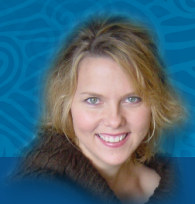LANDSCAPES

A stormy sea on the Isle of Skye
Many years ago, I was sitting on a clifftop on the coast of the Isle of Lewis. I had traveled to the western edge of Europe, then on a boat to the Western Isles of Scotland. I then crossed Lewis itself in a rickety school bus, to reach its west coast. Now I was sitting about as far west as one could get in inhabited Europe, staring out at the Atlantic Ocean.
It was misty, as it often is. Curls of vapour touched my cheeks. I could not really see the sea, only hear its muffled murmur somewhere far below. Farther along the cliffs, sheep bleated.
I could have been sitting there in any time, I thought. The mists had shrouded me in magic.

These vivid colours are Scotland to me
It was like a memory pulled up from deep inside me. And in that moment, the desire to write about the ancient peoples in Scotland leaped alive in my heart.
I got up and walked until I came across old Mr MacGregor, the farmer seeking his sheep. We talked. His sheepdog darted around my feet, and I scratched its head.
I asked what it was like living there in that isolated spot, and — somewhat stupidly — what it was like speaking Gaelic, his own tongue, when few visitors could understand it. He replied, “Och, aye, we all speak the gaelic,” and he said it as “gahlic”, as it should be said. And when I heard the musical lilt of his speech, like a long rill of melody…
Well, then, I was lost.
Settings

Dunadd Fort, Kilmartin
Kilmartin Glen has more archaeological remains in one small valley than any other part of Scotland. At its heart is Dunadd, the volcanic crag that was the kingdom of the Gaelic kings from the sixth to the ninth centuries AD.

Dun Carloway, the Isle of Lewis
The Isle of Lewis, the site of my original "vision” became my Sacred Isle, where the priestesses live beside the famous (existing) stone circle of Callanish. There are also remains of broch towers on the island, such as that at Dun Carloway, where the nobility lived.
I also set smaller scenes in the Cairngorm mountains, around Inverness, and at Bennachie hill near Aberdeen.
The Song of the North / The Boar Stone also took in Hadrian’s Wall, in Cumbria, and Burghead near Inverness.

Loch and Glen Etive
The Swan Maiden is set partly in Ireland, near Navan fort in Armagh - which was the mythical Emain Macha. Mostly it is set around Loch Etive in Argyll. This is traditionally where Deirdre and Naisi lived before returning to Ireland.
The Raven Queen is set wholly in Ireland, some scenes also at Navan fort (Emain Macha). Queen Maeve's stronghold of Cruachan is supposed to be Rath Croghan, near Tulsk, Roscommon; the lake where Ruan lives is Lough Boderg.
I love Ireland, but the Scottish landscape inspires me, and has inspired most of my books. The Celtic belief in the sacredness of all things, their closeness to nature, and the veneration of springs, caves and rivers as being doorways to the Otherworld mean that Scotland is not just beautiful. Trying to see the land through their eyes has given rise to many writing ideas, beyond marvelling at mere loveliness.

An Otherworldly loch
It constantly shifts and glimmers, as if you are indeed catching glimpses of another world.
Of the Otherworld.
Rights queries: Russell Galen
at Scovil Galen Ghosh Literary Agency
Publicity queries: Kathleen Rudkin
at Bantam Dell

